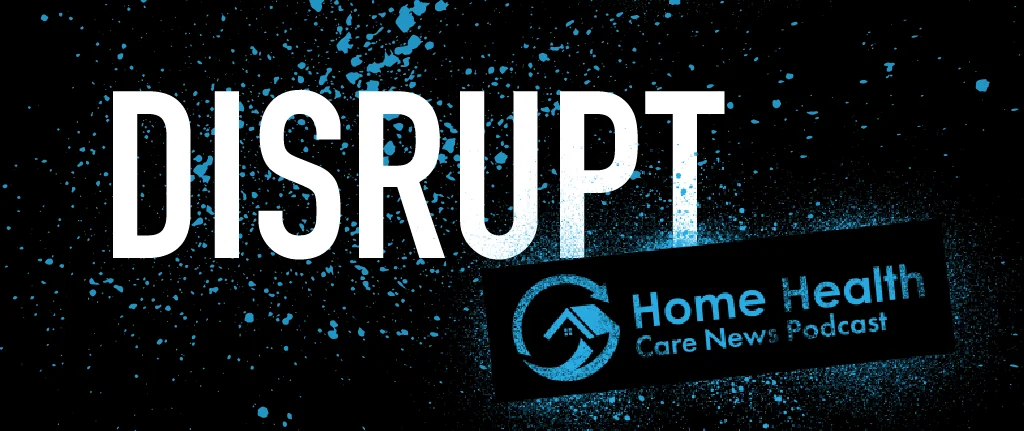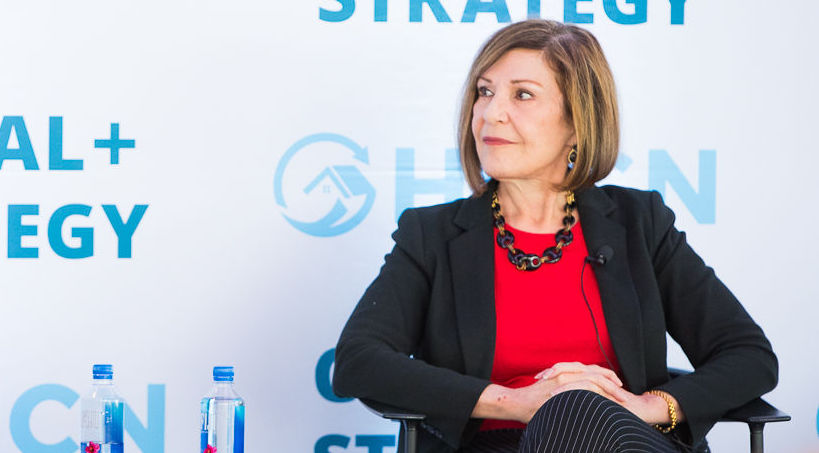As the larger health care continuum continues to embrace value-based care and home health readies itself for the expansion of the Home Health Value-Based Purchasing (HHVBP) Model, Alivia Care seems like a company ready to navigate these new waters.
The company is making a concerted effort to move further into the risk-based environment through its joint ventures with Programs of All-Inclusive Care for the Elderly (PACE) organizations and ACO REACH participants.
But even if Alivia appears ready, there will be a learning curve, as its leader willingly admits.
Alivia Care is a provider of home health, hospice and palliative care services. The company operates across 32 counties in North Florida and Southeast Georgia. It entered the home health market in 2021 with its acquisition of Better Life Home Health.
To learn more about Alivia Care’s value-based care journey, Home Health Care News sat down with CEO Susan Ponder-Stansel for our latest episode of “Disrupt.” During the conversation, Ponder-Stansel also explained why home health fits well with the company’s other services.
Highlights from the conversation are below, edited for length and clarity.
Subscribe to Disrupt via Apple Podcasts, SoundCloud or your favorite podcast app.
HHCN: Alivia Care has been a presence, particularly in hospice, but home health is somewhat new for the company. Why did you think home health would go well with the other care services?
Ponder-Stansel: Home health care is something that aligned very much with the notion that people wanted to receive care outside of institutional settings, which is basically what the hospice and PACE models are. It fit very well into our portfolio, but one of the main reasons I wanted to get into that business is because we had been focused for many years on how to more effectively provide care for those with serious and advancing illnesses, who did not want to elect the hospice benefit, or who needed care before they were medically eligible for hospice.
Something the industry has been discussing a lot is that there isn’t really a defined palliative care benefit at this point or a defined payment mechanism. A lot of home care patients do need a different kind of care than restorative. Home health, to us, seems to not only fill that need to be able to provide all aspects of post-acute care, but it also was a good vehicle to begin to deliver palliative and serious illness care in preparation for what we see as the new world where you are supposed to have that continuum of services to support people as they move through their advancing illness.
Home health is a very needed service. We do see the value from a restorative standpoint, but then we also wanted to be able to use the components of home health that weren’t necessarily focused on restoration, but on preventing or mitigating further decline.
Can you talk about some of the things that Alivia Care has been able to accomplish since adding home health?
One of the things that we’ve accomplished during this first year is really being able to focus on those intersections between what home health is doing and what hospice is doing. That gives us our focal point for specialty programs that we want to develop or the types of patients we want to seek referrals from.
Coming into this business, we definitely wanted the traditional patients who were coming out of the hospital, who needed wound care and orthopedic care, that sort of thing. We thought that being in the business would also give us the opportunity to look at those who need a different kind of care, and wouldn’t necessarily be able to get that through a traditional home health or hospice provider.
In the past, we’ve spoken about how Alivia Care really wants to offer home health services that are “a major differentiator when it comes to health outcomes.” Can you talk about what this means at your company?
What we’re focusing on, for the future, is understanding that eventually our health care system, and particularly Medicare – which is the biggest purchaser of health services in the country – is moving away from volume to value.
We really wanted to be able to look at specific patient populations and what they needed that was different from the core components of service. For example, patients who are coming out of the hospital and need cardiac rehab services. One of the things that we know from working with those patients on the hospice side is as they’re at the end of their congestive heart failure, depression is a common comorbidity. The trajectory of that illness is not as predictable as advanced cancer, and stress for caregivers can be very difficult.
We wanted to build those learnings that came from our hospice experience into the service that we deliver for specific patient populations. Those with advanced pulmonary disease, those with neurological disease, even those who just have advancing geriatric frailty, because as we are looking either at value-based purchasing or being a good partner to payers who are at risk for the total cost of care, including outcomes, we needed to be able to deliver specific outcomes for specific patient populations. That was what we meant by really finding something that would differentiate.
Another thing that we are building into our service offering is a real focus on person-centered care and the use of the interdisciplinary care team. We believe that those kinds of practices, processes and core components are going to help home care succeed at value-based purchasing.
I had the pleasure of speaking to you at the Home Health Care News Capital+Strategy conference. During our conversation, we spoke about how your biggest strategic goal for Alivia Care was moving into the risk-based environment. What are you doing to move closer to that goal?
One of the things that we’re doing to move into that risk-based environment, whether we are the direct risk-taker, or whether we’re partnering with someone who is taking risk, is to really fill out those other components of service other than hospice.
One of the examples I’ll give is the PACE program. A lot of special needs plans, and other types of payers who are completely at risk, like to utilize PACE because it enables their enrollees to have a good quality of life, primary care, that sort of thing.
Another area that we are involved in is working with one of the REACH ACOs to care for their high need, high-risk population that is at the end of life and has advancing illnesses, but is not medically ready for hospice yet.
If I had to just round this up to the 50,000-foot level, what I would say is, we’re really focusing on being prepared to work with those that are taking risk, but perhaps don’t have all the components of operations or services that would be necessary to succeed at it. For example, there are many primary care practices that are very successful at global capitation – taking full risk for those covered lives in their practice. Where some of the challenges come up are after hours, and needing to be able to respond in the home, on-call, when someone is having an issue or exacerbation of their illness that may lead them to either call 911 or show up at the hospital.
We’re really focusing on where we can add value and then really preparing to position ourselves as a great partner to work with on those things that are troubling to those at complete risk, like readmissions, after hours, unnecessary hospital and acute care utilization. With all of those things, we believe we can bring some value to a partner.
What do you have in place to succeed in a risk-based environment? How do you hold yourself accountable?
You have to not lose your nerve and your courage when you move into [a risk-based environment], because if you knew how to do it perfectly the first time — you would have been doing it for a long time. You have to be committed to the learning curve and some of the financial learning curves as well.
The interdisciplinary care team really should be managing risk, looking at utilization and developing care plans — really using the care plan as a way to both manage utilization and focus on outcomes is one way that we’re doing it.
There are two other components that are really important. One is to have really good access to data, Medicare claims data, things that let you stratify your risk and know what you’re getting into and what kind of patients are in your population. The second thing is predictive instruments, whether it’s old-school paper or algorithms that can help you, through AI, to understand who’s at risk for readmission, and what kind of utilization you might expect from a particular patient.
How is your company preparing for the nationwide expansion of HHVBP, especially as a company that’s newer to home health?
Lots of consulting expertise is the honest answer.
We’re focused on being able to accurately understand the intersection between your clinical pathways, which is very important because, as I understand value-based care and home health, reducing variability with care is an important way that you do achieve your outcomes.
[We’re focused on] making sure that documentation, including the care plan and progress notes, really do accurately reflect what we’re doing and how it aligns with those clinical pathways so that when you’re being benchmarked against others in the country, or in your group, you’ll be able to really deliver the same results or very similar results. Also, conducting education with staff about how to use these tools.




